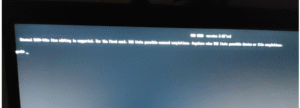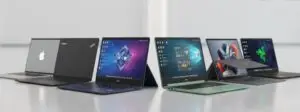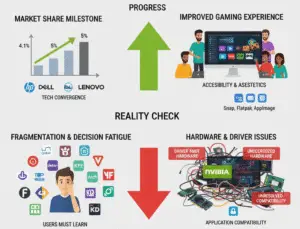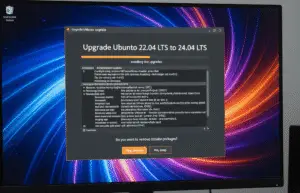
Digital Twins in 2025: The Future of Virtual Replication

Imagine having a virtual clone of your car, your city, or even your own body that updates in real-time, helping you predict problems before they happen. This is no longer science fiction—it’s called a Digital Twin, and by 2025, it will revolutionize industries like healthcare, manufacturing, and smart cities.
In this article, we’ll break down what Digital Twins are, how they work, real-world applications in 2025, and why they matter—all in simple, easy-to-understand language.
What is a Digital Twin?
A Digital Twin is a virtual, real-time replica of a physical object, system, or process. It uses sensors, AI, and data analytics to mirror the real-world counterpart and simulate future scenarios.
Simple Example:
Think of a flight simulator—it mimics a real airplane’s behavior based on live data. A Digital Twin does the same but for anything: machines, buildings, or even human organs.
How Do Digital Twins Work? A Simple Explanation with Examples
Imagine having a perfect digital copy of a real-world object—like a wind turbine, a hospital, or even a human heart—that updates in real time, helps predict problems, and suggests improvements. That’s exactly what a digital twin does!
How Digital Twins Work: Step by Step
1. The Physical Object (The Real-World Thing)
Every digital twin starts with a real object or system. This could be:
-
A wind turbine generating electricity
-
A hospital managing patient care
-
A car engine running in a vehicle
-
A human heart being monitored for health
2. Sensors & IoT (The Data Collectors)
The physical object is fitted with sensors (tiny devices that measure things like temperature, speed, pressure, etc.). These sensors send live data to the digital twin through the Internet of Things (IoT).
Example:
A wind turbine has sensors tracking:
-
Wind speed
-
Blade rotation speed
-
Temperature of components
-
Vibration levels
3. The Virtual Model (The Digital Copy)
A software program creates a real-time digital replica of the physical object. This isn’t just a 3D model—it’s a living simulation that changes as the real object changes.
Example:
If the wind turbine’s blades slow down due to strong winds, the digital twin shows the same change instantly.
4. AI & Analytics (The Brain Behind Predictions)
Artificial Intelligence (AI) analyzes the data to:
-
Predict failures before they happen (e.g., warning that a turbine bearing might fail soon).
-
Optimize performance (e.g., adjusting blade angles for maximum energy efficiency).
-
Test changes safely (e.g., simulating how a new part would work before installing it in the real turbine).
Example:
A hospital’s digital twin could:
-
Predict ICU bed shortages before they happen.
-
Test new staff schedules to reduce patient wait times.
Real-World Examples of Digital Twins
1. Smart Factories
Companies like Siemens use digital twins to monitor factory machines, preventing breakdowns and improving efficiency.
2. Healthcare
Doctors use digital twins of hearts to simulate surgeries before performing them on real patients.
3. Smart Cities
Cities like Singapore have digital twins to manage traffic, energy use, and emergency responses.
Why Are Digital Twins Useful?
-
Save money by preventing equipment failures.
-
Improve safety by testing changes in a risk-free virtual space.
-
Boost efficiency by optimizing performance in real time.
Example:
A smart factory uses Digital Twins to monitor machines. If a robot arm overheats, the digital version alerts engineers before it breaks down.
Digital Twins in 2025: 5 Key Trends
By 2025, Digital Twins will be smarter, faster, and more widespread. Here’s what to expect:
1. Healthcare: Personalized Medicine
-
Digital Twins of Human Organs – Doctors will simulate surgeries on a patient’s virtual heart before operating.
-
AI-Powered Health Predictions – Your “digital health twin” could warn you about potential diseases based on genetics and lifestyle.
2. Smart Cities: Safer & Efficient Urban Living
-
Traffic Management – Cities like Singapore already use Digital Twins to reduce congestion by simulating traffic flow.
-
Disaster Preparedness – Predicting flood risks by modeling weather impacts on infrastructure.
3. Manufacturing: Zero-Downtime Factories
-
Predictive Maintenance – Machines fix themselves before failing, saving billions in repairs.
-
Virtual Prototyping – Car companies test crash simulations digitally instead of building physical models.
4. Retail: Hyper-Personalized Shopping
-
Virtual Store Twins – Brands like IKEA use Digital Twins to test store layouts for better customer flow.
-
AI Fashion Assistants – A digital version of you “tries on” clothes online before you buy.
5. Climate Change & Sustainability
-
Forest & Wildlife Monitoring – Digital Twins track deforestation and animal migration in real time.
-
Energy Optimization – Wind farms use Digital Twins to position turbines for maximum efficiency.
Why Are Digital Twins Important?




Challenges & Risks in 2025
While Digital Twins offer huge benefits, there are concerns:
-
Data Privacy – Who owns your “health twin” data?
-
Cybersecurity – Hackers could manipulate a city’s Digital Twin.
-
High Costs – Small businesses may struggle to adopt the tech.
The Future: Digital Twins + Metaverse?
By 2025, Digital Twins could merge with the Metaverse, creating fully interactive 3D worlds where:
-
Architects walk through unbuilt skyscrapers.
-
Patients see their own beating heart in VR before surgery.
-
Climate scientists simulate future weather patterns to fight global warming.
Conclusion
Digital Twins in 2025 will transform how we live, work, and solve problems. From preventing heart attacks to designing eco-friendly cities, this technology bridges the physical and digital worlds like never before.




